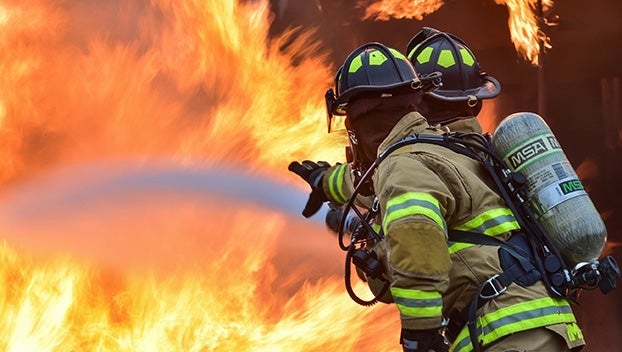Accelerant detection canines sniff out arson
Published 12:01 am Wednesday, May 6, 2015
The Louisiana State Fire Marshal, along with the Department of Homeland Security’s United States Fire Administration, is using this week through Saturday to focus on the value and contribution accelerant detection canines make to fire departments, law enforcement agencies and their communities.
The theme for the 2015 National Arson Awareness Week is “Accelerant Detection Canines — Sniffing Out Arson.”
According to the U.S. Fire Administration, from 2010-2012 an estimated 17,400 intentionally set fires in residential buildings were reported each year, resulting in 275 civilian deaths, 800 civilian injuries and $513 million in property losses.
For the same period, an estimated 9,000 intentionally set fires occurred in nonresidential buildings each year, resulting in $282 million in property losses. The FBI reports over the last five years an average of 53,127 arsons were reported with an average dollar loss of $15,086 per incident.
An accelerant detection canine is trained to sniff out minute traces of ignitable liquid accelerants that may have been used to start a fire. Each dog is part of a team comprised of the canine and its handler. These canines possess superior capabilities in identifying odors and discriminating among scents.
Compared to about six million olfactory receptors in humans, a canine can possess up to 300 million olfactory receptors, making their noses tens of thousands of times more sensitive than that of humans. Further enhancing the canines ability is an organ in the roof of the mouth, not present in humans, which allows the dog to essentially taste a scent.
Accelerant detection canines assist investigators in determining the precise location of trace amounts of ignitable liquids at fire scenes, thus resulting in a higher probability of laboratory confirmation of samples taken; all of this in a fraction of the time it may take humans and with a much higher success rate. On average it takes a canine 30 minutes to work a fire scene, whereas it can take humans days to accomplish what the canine is able to do in minutes.
While humans can make educated guesses about possible accelerant use, they are still required to collect an average of 20 samples of fire debris for laboratory analysis. A dog’s nose, however, greatly narrows down the guess work.
Higher quality lab samples speed up the investigation, subsequently resulting in higher conviction rates.
James Walker, former director of the Sensory Research Institute at Florida State University, states that a dog’s sense of smell overpowers a human’s own by orders of magnitude — up to 100,000 times as acute.
Likewise, Alexandra Horowitz, author of “Inside of a Dog,” says dogs can detect some odors in parts per trillion. She explains that while a human might notice if his or her coffee has a teaspoon of sugar in it, a dog, however, could detect a teaspoon of sugar in a million gallons of water, or two Olympic-size pools. The State Fire Marshal currently maintains nine canine teams across the State of Louisiana, four of which are accelerant detection teams.
For more information concerning National Arson Awareness Week and the value of accelerant detection canines, visit usfa.fema.gov/aaw.
Deputy Chief Brant Thompson works with the Office of Louisiana State Fire Marshal.




